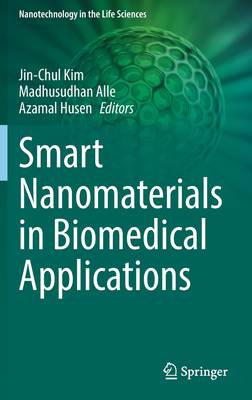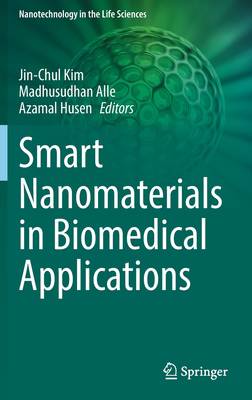
Je cadeautjes zeker op tijd in huis hebben voor de feestdagen? Kom langs in onze winkels en vind het perfecte geschenk!
- Afhalen na 1 uur in een winkel met voorraad
- Gratis thuislevering in België vanaf € 30
- Ruim aanbod met 7 miljoen producten
Je cadeautjes zeker op tijd in huis hebben voor de feestdagen? Kom langs in onze winkels en vind het perfecte geschenk!
- Afhalen na 1 uur in een winkel met voorraad
- Gratis thuislevering in België vanaf € 30
- Ruim aanbod met 7 miljoen producten
Zoeken
Smart Nanomaterials in Biomedical Applications
€ 244,45
+ 488 punten
Omschrijving
With the start of 2020, the wrath of pandemic challenged the scientific community to develop more advanced drug delivery approaches for biomedical applications, endowing conventional drugs with additional therapeutic benefits and minimum side effects. Although significant advancements have been done in the field of drug delivery, there is a need to focus towards strategizing novel and improved drug delivery systems that should be convenient and cost-effective to the patients, and simultaneously they should also provide financial benefits to pharmaceutical companies. Controlled drug delivery technology offers ample opportunities and scope for improvising the therapeutic efficacy of drugs via optimizing the drug release rate and time. For this endeavour, smart nanomaterials have served as remarkable candidates for biomedical applications, owing to their ground-breaking properties and design. The development of such nanomaterials requires a broad knowledge related to their physio-chemical properties, molecular structure, mechanisms by which the nanomaterials interact with the cells, and methods by which drugs are released at the site of action. This knowledge must also be allied with the knowledge of signaling crosstalk mechanisms that are modulated by the nanomaterial-drugs composite. It can be anticipated that these emerging drug delivery technologies can facilitate the world to successfully encounter such pandemic outbursts in the future in a cost-effective and time-effective manner. The chapters in this book deal with the advanced technologies and approaches that can benefit advanced students, researchers, and industry experts in developing smart and intelligent nanomaterials for future biomedical applications, and development, manufacturing, and commercialization for controlled and targeted drug delivery.
Specificaties
Betrokkenen
- Uitgeverij:
Inhoud
- Aantal bladzijden:
- 600
- Taal:
- Engels
- Reeks:
Eigenschappen
- Productcode (EAN):
- 9783030842611
- Verschijningsdatum:
- 20/01/2022
- Uitvoering:
- Hardcover
- Formaat:
- Genaaid
- Afmetingen:
- 156 mm x 234 mm
- Gewicht:
- 1034 g

Alleen bij Standaard Boekhandel
+ 488 punten op je klantenkaart van Standaard Boekhandel
Beoordelingen
We publiceren alleen reviews die voldoen aan de voorwaarden voor reviews. Bekijk onze voorwaarden voor reviews.








